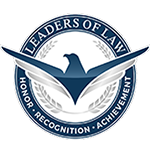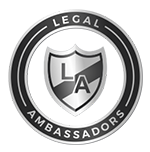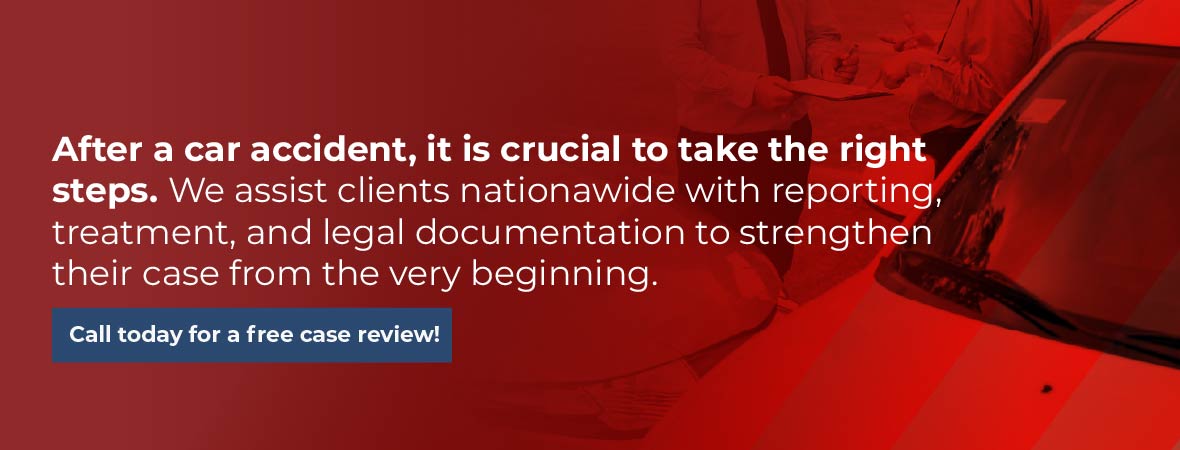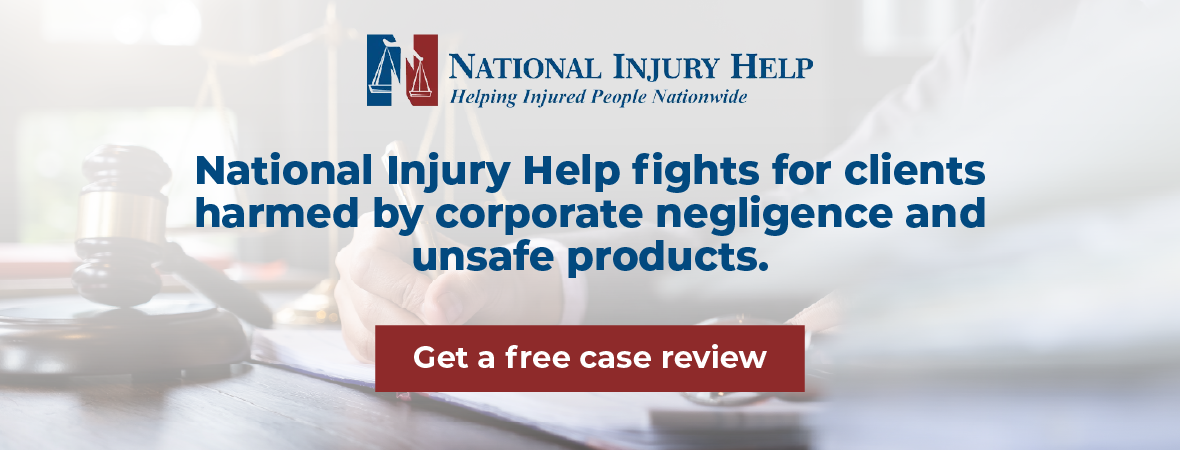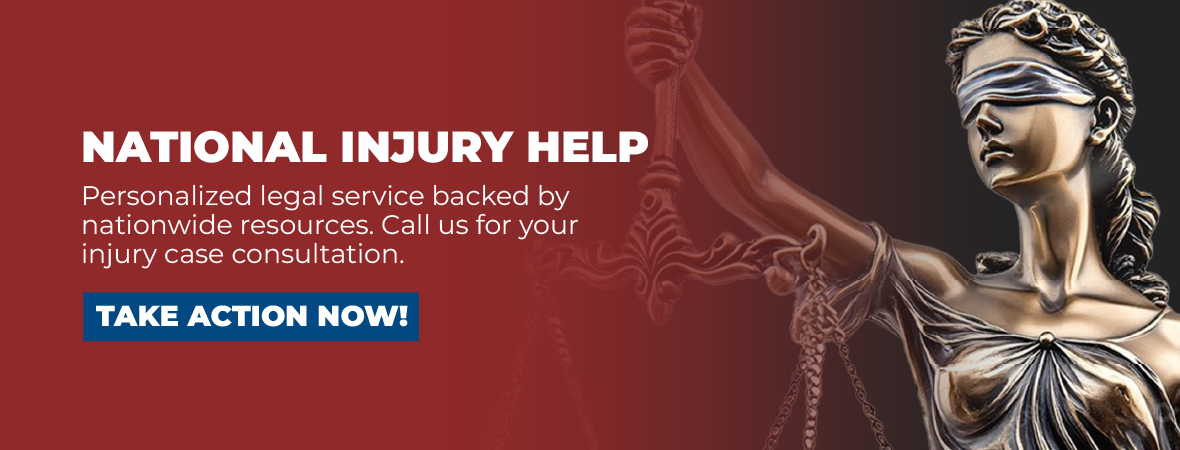If you have just been in a crash, what you do next matters. This article gives you a clear, simple checklist to follow. From medical care to legal help, we have got you covered. Contact National Injury Help today and let us take care of the rest while you recover.
A car accident can happen in the blink of an eye. One moment you’re driving to work, running errands, or enjoying a peaceful ride, and the next, there’s the sound of impact, shattered glass, and your heart racing from the shock. It’s disorienting, and the rush of confusion can make it hard to think clearly. But the steps you take right after a crash can make a big difference, not just for your health, but also for your passengers, your insurance claim, and your legal protection.
Staying calm might feel out of reach at that moment, but having a simple action plan can help bring a sense of order to the chaos. That’s exactly what this guide offers: clear, practical steps to take after an accident, no matter where you are in the U.S.
While traffic laws and insurance rules can vary from state to state, especially when it comes to deadlines for reporting or filing a claim, the basics stay the same. Safety comes first. Then comes documenting the scene, exchanging information, and getting the help you need, both medical and legal.
This accident response guide contains helpful tips to help you know what to do after a car crash. The goal is to give you confidence in a tough moment and help you protect your well-being and your rights.
1. Immediate Post-Accident Steps to Take at the Scene
Remember the four-word order: Safety, Help, Information, Documentation.
A. Ensure Safety First
- Move to a safe place: If your vehicle still runs and no one appears seriously hurt, switch on the hazard lights, shift into drive or neutral, and steer or push the car onto the shoulder or a nearby parking lot. This reduces the chance of a secondary collision, which is common on busy highways and at night.
- Turn on your hazards: Flashing lights warn approaching drivers to slow down and switch lanes.
- Check for injuries: Scan your own body head-to-toe. Ask passengers if anything hurts, then calmly check on people in other vehicles if it is safe to step outside.
B. Call 911
- Know when to dial: Call immediately if anyone is hurt, if a vehicle is blocking traffic, if you see smoke or leaking fuel, or if local law requires police for collisions above a certain dollar amount (often $500 or $1,000).
- Give clear details: Tell the dispatcher how many cars are involved, whether anyone is trapped, and the exact street, highway mile marker, or landmark.
- Stay on the line: The dispatcher may walk you through first aid or advise you to move farther from traffic.
C. Exchange Information
- Collect full names, current addresses, phone numbers, driver’s license numbers, license plate numbers, and insurance details from every driver involved.
- Remain polite. Do not admit fault, even if you suspect you made a mistake. Simply trade facts and wait for the police report.
D. Document the Scene
- Photos and video: Take wide shots showing the positions of all vehicles, then close-ups of damage, skid marks, broken glass, and road signs. A slow video narration (“My car was traveling west, the traffic light is green…”) can capture details your memory may lose.
- Road and weather conditions: Puddles, loose gravel, or an icy patch can matter later. Snap pictures of speed-limit signs or construction barrels.
- Witness contact: Bystanders often leave quickly. Ask for names and phone numbers right away.
- Timeline notes: Write or voice-record the date, time, and location. This tiny step resolves later arguments over when and where the crash happened.
2. Your Legal Duties in the United States
A. Stop and Render Aid
Federal guidelines and nearly every state law require you to stop after a crash, stay nearby, and give “reasonable assistance.” Reasonable assistance usually means calling 911, applying simple first aid if you are able, or helping arrange a ride to the hospital when emergency crews are delayed.
B. Reporting Thresholds
- Police Reports
Most states demand a police report if anyone is injured, killed, or if property damage appears higher than a set amount (often $1,000). The responding officer fills out an official crash report, which becomes public record. - Self-Reporting
If no officer arrives, some states require you to file your own report with the local Department of Motor Vehicles (DMV), Department of Transportation (DOT), or Department of Public Safety (DPS). Deadlines range from 24 hours to 30 days. Missing the deadline can lead to fines or license suspension.
C. Move It or Leave It?
More than half of U.S. states have “move-it” laws for minor, no-injury crashes, meaning you must move drivable vehicles out of traffic when safe. Other states recommend staying put until police arrive. Keep a reflective safety vest and a folding warning triangle in your trunk so you can stand outside the flow of traffic and remain visible.
D. Penalties for Leaving the Scene
Leaving without exchanging information is classified as hit-and-run nationwide. Penalties escalate sharply if someone is hurt, ranging from hefty fines and license revocation to felony jail sentences.
3. Medical Attention and Injury Records
A. Get Checked Even if You Feel Fine
Adrenaline masks pain. Concussions, whiplash, and internal bleeding may not appear until hours later. Accept transport to the hospital if paramedics suggest it, or visit an emergency room, urgent care clinic, or your family doctor as soon as possible, preferably the same day.
B. Build a Medical File
- Collect documents: X-rays, CT scans, prescription receipts, physical therapy schedules, and discharge summaries.
- Track daily impact: Use a notebook or phone app to log pain levels, missed work, sleepless nights, and chores you cannot do. Real-life examples strengthen future claims.
- Follow treatment plans: Skipping appointments lets insurers argue your injuries are minor.
4. Dealing With Insurance Companies
Insurance companies focus on profit. Understanding their playbook helps you protect yourself.
A. Notify Your Insurer Promptly
Most policies require “prompt notice,” usually within 24-48 hours. Provide the basics: date, time, location, vehicles, and police report number. Avoid guessing your speed or accepting blame.
B. Be Cautious With the Other Driver’s Insurer
Adjusters may call, sounding friendly, and ask for a recorded statement. Politely decline until you speak with a lawyer. Anything you say on tape can be quoted out of context later.
C. Fault vs. No-Fault States
- Fault (tort) states: The driver who caused the crash (and their insurer) pays for injuries and property damage, subject to comparative negligence rules.
- No-fault states: Each driver’s personal injury protection (PIP) covers their own medical bills up to a limit, regardless of blame, but property damage still follows fault.
Know which system your state uses before discussing settlements.
D. Comparative, Contributory, and Modified Negligence
- Pure comparative negligence: You can recover damages even if you were 99 percent at fault, but your award is reduced by your percentage of blame.
- Modified comparative negligence: You can recover only if you are less than 50 or 51 percent at fault, depending on the state.
- Contributory negligence: If you share any blame (even 1 percent), you recover nothing. Only a handful of jurisdictions follow this strict rule (e.g., Virginia, North Carolina, Alabama, Maryland, and D.C.).
Adjusters know these rules cold and may try to increase your share of blame. Choose your words carefully.
E. Common Insurance Tactics
- Delay: Repeated requests for extra forms or “internal reviews.”
- Deny: Arguing the crash was entirely your fault.
- Lowball: Offering a quick payment that barely covers the emergency-room visit.
- Divide and conquer: Calling each injured passenger separately to keep settlement amounts secret.
F. Ways to Protect Yourself
- Send calls to voicemail and respond in writing when possible.
- Decline recorded statements until you receive legal advice.
- Keep every letter, email, and claim note in a dated folder, paper, or digital format.
- For serious injuries or high medical bills, consider hiring an attorney who handles communication for you.
5. When to Call a Car Accident Lawyer
Minor fender-benders with no injuries may not require a lawyer. However, certain red flags mean that professional help can prevent financial disasters.
A. Situations Requiring Legal Help
- Serious injuries, hospital stays, or ongoing therapy.
- Disputed liability, unclear police reports, or multiple vehicles.
- Commercial vehicles, rideshare cars, delivery vans, or semi-trucks.
- Uninsured or underinsured drivers.
- Hit-and-run scenarios where the at-fault driver disappears.
- Insurance delays, denials, or settlement offers that seem too low.
B. Benefits of Hiring an Attorney
- Local knowledge: State-specific traffic laws, court rules, and jury tendencies.
- Resources: Access to crash reconstruction experts, medical specialists, and investigators.
- Contingency fees: Most personal injury lawyers charge nothing up front and collect only if you receive money.
- Stress relief: Your lawyer deals with paperwork, phone calls, and negotiations while you focus on healing.
6. Extra Tips to Prepare Before a Crash Happens
- Keep an emergency kit such as reflective triangles, first-aid supplies, a flashlight, a phone charger, bottled water, and a notepad with a pen.
- Store digital copies of your insurance card, registration, and roadside-assistance number on your phone.
- Enable location sharing with a trusted friend or family member when taking long trips.
- Consider adding medical-payments (“MedPay”) or personal injury protection to your policy for quick coverage of out-of-pocket medical costs.
- Review your liability limits each renewal. The national average hospital bill for a severe crash injury can exceed $50,000, so state minimum limits are often too low.
Frequently Asked Questions
Do I have to call the police for every accident?
Not always. Some states allow drivers to handle minor, no-injury fender-benders privately. Still, filing a police report creates an official record that prevents later disputes.
How long do I have to file a claim?
Insurance companies set short notice windows, often a few days. State statutes of limitation on lawsuits range from one to six years. Missing either deadline can erase your right to recover.
Will my insurance rates go up if the crash was not my fault?
Possibly. Many insurers raise premiums after any claim, even when another driver is liable. Ask about accident forgiveness programs and shop around at renewal time.
What if I was driving for work or driving a rental car?
Tell your employer and the rental agency right away. Commercial policies or credit-card protections may apply, but only if you give timely notice.
Contact a Car Accident Lawyer
Your recovery window has both medical and legal limits. The sooner you collect evidence, request records, and push insurers to act, the better your odds of full compensation. The attorneys at National Injury Help stand ready to listen to your story, review police and medical documents, and craft a strategy that puts your needs first.
The consultation costs nothing, and you owe no fees unless we win. Reach out by calling 1 (800) 214-1010 today. Let us handle the paperwork, calls, and court dates while you focus on healing and getting back to the life you love.


